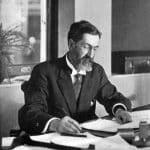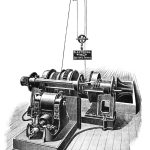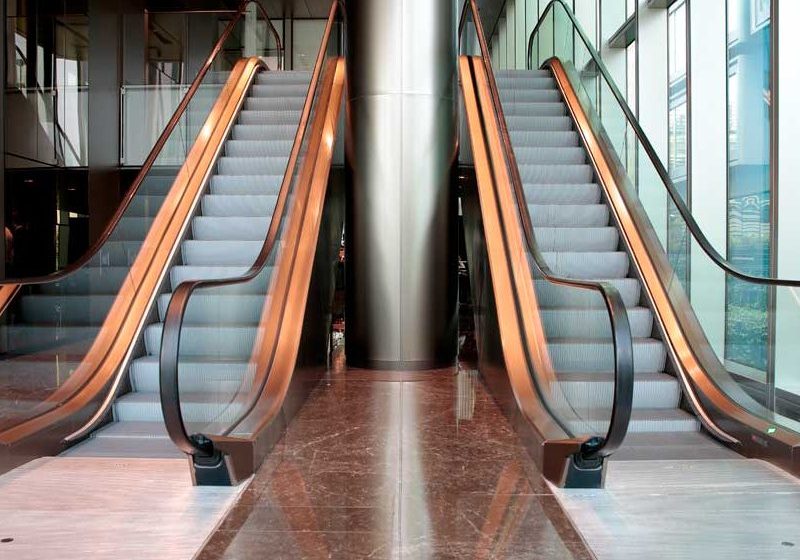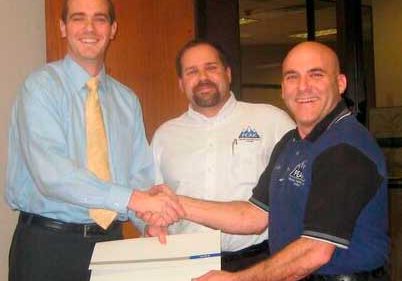A Biography of Reginald Pelham Bolton, Part 1
Apr 1, 2017

An examination of the early life of the influential inventor, consulting engineer and author
Reginald Pelham Bolton was born in 1856 in Kilburn, U.K. His father, the Rev. James Jay Bolton, was an Episcopalian Minister educated in the U.S. and U.K. (James’ father was the Rev. Robert Bolton of Pelham Priory, New York). Following graduation from Cambridge in 1848, James served several churches, becoming Minister of St. Paul’s Episcopal Chapel in Kilburn in 1852. The following year, he married Lydia Louisa Pym, the daughter of the Rev. W.W. Pym of Willian, Hertfordshire. James and Lydia had five children: Robert Gambier (1854-1929), Francis James (1855-1858), Reginald Pelham (1856-1942), William Washington (1858-1946) and Mary Louisa (1860-1939).
James Bolton died in 1863, leaving his wife and four surviving children with a somewhat uncertain future. Robert, who went by his middle name, Gambier, was educated at the Clergy Orphan School for Boys, St. Thomas Hill, Canterbury. The school was founded in 1749 to serve “orphans,” which, in this case, meant fatherless children of Anglican clergy. William was educated at Spencer House, Wimbledon. Both Gambier and William matriculated to Cambridge: while the former did not complete his degree, William earned a BA (1881) and MA (1884). During this period, he also, like his father, entered the service of the Episcopal Church. Gambier became a well-known author and photographer and traveled the world photographing “wild animals.” He was also known for producing photographs that allegedly portrayed images captured during séances. His publications included A Book of Beasts and Birds (1903) and Ghosts in Solid Form (1919). William immigrated to North America and served churches in the Northwest U.S. and Canada. In 1891, he founded the church of St. Mary the Virgin in San Francisco, and, in 1906, he was a cofounder of St. Michael’s University School in Victoria, British Columbia. Following his retirement, he moved to New Zealand, ending his career in Tahiti. Unfortunately, very little is known about Mary Louisa.
This account of Reginald Bolton’s family is necessary, as it establishes the intellectual context for his childhood. Given the academic success of his brothers — evidenced by their attendance at Cambridge — it would be reasonable to assume Reginald followed a similar path. This would be a false assumption. Reginald’s numerous biographies typically state that he was educated in English private schools; however, no record or reference of attendance has been found. There are also no records of his attendance at a university. Thus, it might appear that he had rejected the world of education embraced by his father and brothers. This, too, would be a false assumption. Throughout his lengthy career, Bolton exhibited a profound commitment to learning and scholarship. However, his education followed a very different path than that of his brothers. In 1874, at age 18, he began his “practical education” when he was apprenticed to Powis, James & Co. (Lambeth, London), makers of woodworking machinery. In 1877, he was employed as an assistant engineer with Davey, Paxman & Co. (Colchester, U.K.). The company manufactured and repaired steam engines, boilers, agricultural machinery and mill gearing. One aspect of Bolton’s apprenticeship was recounted in a 1910 biographical sketch: “It is related that as a boy, owing to his slight build, he was found of use in crawling through the manholes of boilers under repair, and thus gained a personal intimacy with their interior conditions which may be considered unique.”[1] In 1878, he was listed as “student member” of the British Institution of Civil Engineers. This marked his initial foray into the world of professional societies, which was to become an important part of his later career.
In December 1879, he left England and moved to the U.S., where he took up a position as an assistant mechanical engineer at the Edgemore Iron Works in Wilmington, Delaware. In 1881, he left the company to work as an assistant to Dr. Erasmus D. Leavitt of Cambridge, Massachusetts. Leavitt was a well-known consulting engineer who specialized in hydraulic engines and pump design. This association was, however, short lived; in 1882, Bolton returned to England. According to numerous accounts, his return was necessitated by ill health. Upon his recovery, he accepted a position as a manager at Appleby Brothers, Ltd. (Southwark, London and Greenwich), a leading manufacturer of steam cranes, dredgers, brickmaking machinery, pile drivers, pumps, and portable and stationary engines.
During this time, Bolton also began his career as a consulting engineer. Over the next 12 years, this work involved travel throughout Europe, where he was engaged in an extraordinary range of work that included civil, mechanical and naval engineering projects. He designed the engines and boilers for the transport ship Italia and “various small vessels for special duties, such as stern wheel steamers for use in canal work in Mexico, and others for South America and Egypt, and [he] took part in trials of various government and mercantile vessels, crossing the Atlantic a number of times.”[1] He was credited with designing the first steam hoisting engine employed in a Sicilian mine (at Caltagirone) and with erecting “the first electrical shop cranes in England.”[1] He also:
“. . . invented and patented improvements in air compressors, electrical rock-boring electric-crane gearing, the latter being the ingenious double hoist by two drums of unequal diameter, each winding one of the ropes and lifting by a block in the bight, a method which was regarded at that time as a novel mechanical application.”[1]
The 1880s also witnessed Bolton’s continued and active participation in various professional organizations. In December 1889, he delivered his first paper, to the Civil and Mechanical Engineers’ Society of Westminster. Titled “Rock-Boring Machinery on the Percussive System,” the paper was described as follows:
“The author gave a number of details of early mechanical drills, illustrating their development into the present improved machines. Several of these were described in detail with diagrams. . . . A considerable amount of inventive attention must have been given to this subject, as a list of some 50 practical machines was shown, all produced within the last 25 years.”[2]
The level of research and investigation indicated in the description reveals Bolton’s commitment to what might be viewed as a scholarly approach to engineering. In February 1891, he presented a second paper, titled “Electric Cranes,” in which he attempted to make the case for the superiority of electric over steam-powered cranes. Bolton expanded on this topic in April 1892 in a paper titled “The Application of Electricity to Hoisting Machinery,” presented to the Society of Engineers. The paper concerned marine winches, factory hoists and industrial overhead traveling cranes. It also included an illustration of an electric ship’s winch designed and patented by Bolton (Figure 2).
In 1893, Bolton served as president of the Civil and Mechanical Engineers’ Society. In the annual address of the president, titled “The Literature of Engineering,” he spoke about technical education and its associated resources:
“After reference to the value of technical study in connection with, or in addition to, practical education, Mr. Bolton considered the difficulties that lay in the way of the technical student by reason of the vast amount of material at his disposal, and the absence of any standard catalog of works, and of any system of cataloging and indexing the same. A bibliography of applied science works, and glossaries of technical terms, were shown to be needs of present day, and their publication under the authority of the learned societies was held to the proper course. A system of guidebooks to study, or condensed bibliographies, several [of] which were suggested to the respectively interested organizations, was advocated. . . . The address closed with an outline of suggested reading for the young engineering student.”[3]
This critical assessment of material available to the “technical student” highlighted the somewhat paradoxical state of affairs in the late 19th century, in which the steady growth of new technical and engineering publications had resulted in an almost overwhelming — and uncataloged — wealth of material. Regrettably, Bolton’s “outline of suggested reading for the young engineering student” has not survived.
This assessment of the state of current literature may have been the impetus behind his first book, Motive Powers and Their Practical Selection, which was published simultaneously in the U.S. and U.K. in 1895. Bolton offered readers a broad introduction to manual, animal, wind and water power; a comprehensive review of steam engines and boilers; a brief overview of various engine types (such as hot air and gasoline engines); and an introduction to electric power. A reviewer offered the following appraisal:
“This is one of a numerous class of books which owes its contents to the price lists and catalogs of the manufacturing engineer; but to do the author justice, we would say that it is better put together than most of such books are, and it is devoid of the padding of illustrations, for there is not one illustration in it, while, at the same time the excerpts have been made with very fair judgment. . . . Perhaps the most novel feature of Mr. Bolton’s book is his inclusion of prices in sterling and dollars for the various motive powers he describes. . . and so far as can be seen in glancing through some of these items, they appear to be fair guides. On all questions of motive power by windmills, turbines or steam engines, of fuels, solid, liquid and gaseous, the author, who has, perhaps, found his chief experience in general engineering, has not selected and strung together his materials in a bad way, and we rather like his chapters on fuels, on the steam engine and on condensation.”[4]
Thus, Bolton sought to fill the gap in engineering literature he described in his 1893 address. Somewhat surprisingly, given the tone of these remarks, he failed to include a bibliography.
One year prior to the publication of Motive Powers and Their Practical Selection, Bolton returned to the U.S. to begin pursuit of a career as a consulting engineer in New York City (NYC). A series of personal events may have prompted this return. Bolton had married Kate Alice Behenna of Woolwich in 1878, and they had two children (Ivy May and Guy Reginald). Kate Alice died in August 1891, and, one year later, Bolton married Ethelind Huyck of NYC. The speed with which Bolton remarried is of interest, as is the fact that his second wife was an American. This, perhaps, implies that he had maintained a strong connection with the U.S. during the 1880s and 1890s. In fact, the wedding took place at his ancestral home: Bolton Priory at Pelham Manor-on-the Sound, which was owned by Mrs. Frederick Vanderbilt Allen in 1892. The event was deemed to be of such social significance that it received national press coverage. One newspaper reported that, following “a wedding trip to Mexico,” the happy couple would return to England, where they would reside at “Bolton place in Hempstead, near London, and a villa at Deal.”[5] However, while this would appear to indicate that Bolton had achieved a reasonable level of professional success in the U.K., he nonetheless decided to move to the U.S. in 1894. This decision may have reflected his new wife’s desire to return to a more familiar setting. It is also possible that Bolton may have perceived that the rise of the skyscraper provided him with new and unique professional opportunities.
The second part of this biography will explore Bolton’s successes in New York and his rapid emergence as a leading expert in his role as a consulting engineer for elevator-system design and installation.
- Figure 1: Reginald Pelham Bolton, Cassier’s Magazine, V. 40, August 1911
- Figure 2: “Electric Ship’s Winch Designed and Patented by Bolton,” “The Application of Electricity to Hoisting Machinery,” Society of Engineers, Transactions for 1892
References
[1] “Reginald Pelham Bolton,” Engineering Review, December 1910.
[2] “Society of Civil and Mechanical Engineers,” The Engineer, December 20, 1889.
[3] “The Civil and Mechanical Engineers’ Society,” The Builder, December 16, 1893.
[4] “Reviews: Motive Powers and Their Practical Selection. By Reginald Pelham Bolton. New York & London: Longmans, Green and Co.,” The Electrical Review, June 7, 1895.
[5] “An Interesting Wedding Next Saturday,” San Francisco Chronicle, August 27, 1892.
Get more of Elevator World. Sign up for our free e-newsletter.









